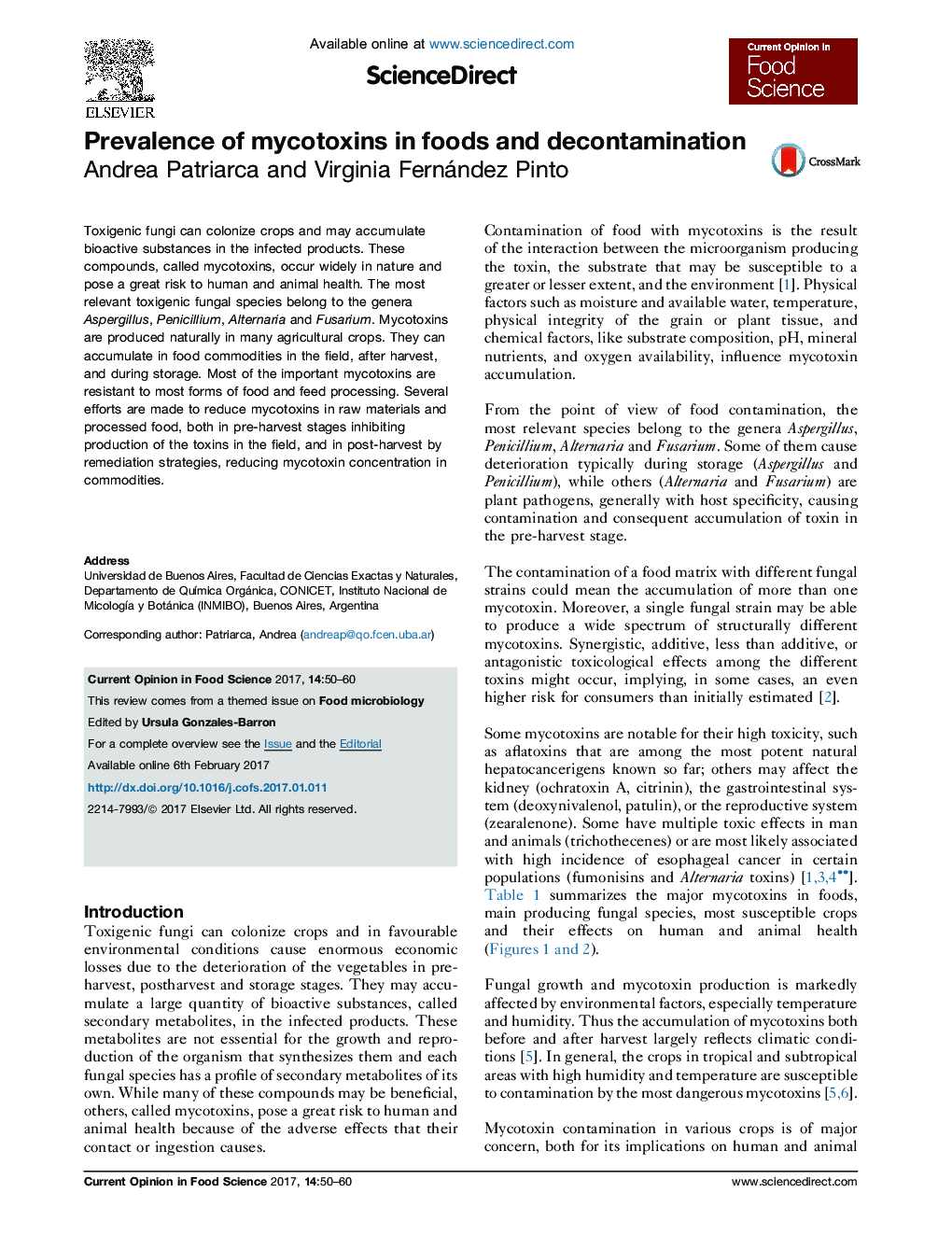| کد مقاله | کد نشریه | سال انتشار | مقاله انگلیسی | نسخه تمام متن |
|---|---|---|---|---|
| 5520897 | 1545091 | 2017 | 11 صفحه PDF | دانلود رایگان |
- Mycotoxins are toxic secondary metabolites produced by filamentous fungi.
- Aspergillus, Penicillium, Alternaria and Fusarium are the main toxigenic genera.
- Mycotoxins can accumulate in a wide range of foods.
- They are stabile at high temperatures and resistant to food processing.
- Control strategies consist of pre-harvest prevention and post-harvest detoxification.
Toxigenic fungi can colonize crops and may accumulate bioactive substances in the infected products. These compounds, called mycotoxins, occur widely in nature and pose a great risk to human and animal health. The most relevant toxigenic fungal species belong to the genera Aspergillus, Penicillium, Alternaria and Fusarium. Mycotoxins are produced naturally in many agricultural crops. They can accumulate in food commodities in the field, after harvest, and during storage. Most of the important mycotoxins are resistant to most forms of food and feed processing. Several efforts are made to reduce mycotoxins in raw materials and processed food, both in pre-harvest stages inhibiting production of the toxins in the field, and in post-harvest by remediation strategies, reducing mycotoxin concentration in commodities.
Journal: Current Opinion in Food Science - Volume 14, April 2017, Pages 50-60
